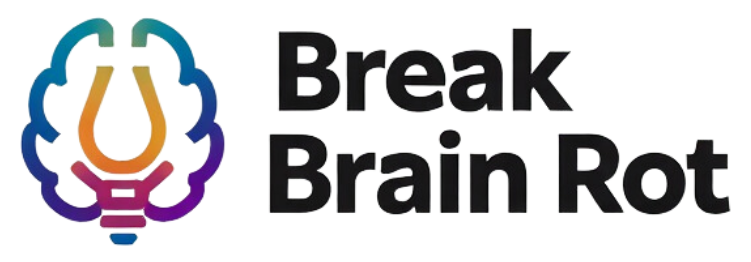In today’s hyperconnected world, the habit of doomscrolling has silently crept into millions of daily routines. You pick up your phone to check the news or social media, but before you know it, you’re endlessly scrolling through distressing headlines or negative posts. This digital-era epidemic leaves your mind feeling drained, overwhelmed, and unable to focus. If you’ve ever wondered how to break free, this article will guide you through practical strategies for reducing doomscrolling impact, helping you reclaim your productivity, mental health, and overall well-being.
Table of Contents
- Understanding Doomscrolling and Its Psychological Effects
- Why Reducing Doomscrolling Impact is Crucial for Your Brain
- Practical Steps for Reducing Doomscrolling Impact
- Tools and Apps to Help Cut Down Doomscrolling
- Building Healthy Digital Habits
- FAQs
- Conclusion
Understanding Doomscrolling and Its Psychological Effects
What is Doomscrolling?
Doomscrolling refers to the excessive consumption of negative or distressing news online, often via social media or 24/7 news platforms. This behavior has become increasingly common in the age of smartphones, where information is always at our fingertips. Doomscrolling is characterized by compulsive, prolonged scrolling sessions that fail to provide relief but instead heighten feelings of anxiety and despair.
Read more about digital overload and its effects on productivity.
Research also reveals that the constant influx of bad news triggers stress responses in the brain, perpetuating a vicious cycle of emotional overload.
The Science Behind the Brain Drain
When you doomscroll, your brain enters a heightened state of vigilance. Exposure to negative content activates the amygdala, the brain’s “fear center,” triggering the fight-or-flight response. Over time, this chronic stimulation can disrupt your mood, focus, and sleep patterns. Studies indicate that continuous exposure to distressing information can even lead to long-term anxiety or depression.
Why Reducing Doomscrolling Impact is Crucial for Your Brain
Mental Health Repercussions
Consuming a constant stream of bad news affects more than just your mood—it can harm your mental health in profound ways. Research has shown a direct link between doomscrolling and rising levels of stress, anxiety, and even depression. For those already prone to mental health struggles, this habit can exacerbate symptoms, creating a cycle that is difficult to break.
A pivotal study highlights how watching or reading distressing news regularly correlates with heightened feelings of worry and helplessness.
Productivity and Cognitive Impairment
Your brain can only process so much information at a time. Doomscrolling overwhelms cognitive resources, leaving little mental energy for creative thinking, problem-solving, or focus. In a professional context, this translates to reduced productivity and poor work efficiency. That’s why reducing doomscrolling impact is not just about emotional health but also about protecting your ability to think clearly and effectively.
Practical Steps for Reducing Doomscrolling Impact
Awareness and Mindfulness Practices
The first step in breaking the doomscrolling habit is awareness. Start by acknowledging when you’re engaging in it and notice how you feel afterward. Introduce mindfulness practices such as meditation, journaling, or simply pausing to reflect on your emotions. Apps like Headspace or Calm can guide you in cultivating a more grounded and intentional relationship with digital content.
Explore mindfulness strategies for achieving a fuller digital detox.
Time Management Techniques
Set boundaries on your screen time to prevent endless scrolling. You can use tools like Apple’s Screen Time or Android’s Digital Wellbeing to monitor and limit your media consumption. Additionally, schedule “phone-free” hours during the day, or allocate specific times to stay updated on news without exceeding them.
Substituting Negative Content with Positive Alternatives
Balance is key. If you enjoy staying informed, offset negative news with positive, uplifting stories. Engage in hobbies like reading, painting, or exercising to improve your mood and keep your mind occupied. Websites like Good News Network curate feel-good news to brighten your day.
Learn how positivity can thrive in the digital space.
Tools and Apps to Help Cut Down Doomscrolling
Top 5 Apps to Limit Screen Time
- Freedom: Block distracting apps and websites.
- StayFocusd: Limit your time on specific sites.
- RescueTime: Track and analyze your screen usage patterns.
- Forest: Grow virtual trees by staying off your phone.
- AppDetox: Set custom restrictions for apps.
Discover more tech tools for wellness here.
Features Within Social Media Platforms
Many social platforms now offer built-in wellness tools, such as Instagram’s “Your Activity” page or TikTok’s screen time reminders. By enabling these features, you can actively monitor and limit the time spent scrolling.
Building Healthy Digital Habits
Creating a Balanced Digital Diet
The goal is not to eliminate digital content but to consume it purposefully. Choose specific times to check updates and ensure that your content sources are reliable and relevant. Avoid aimless browsing by categorizing your apps (e.g., work-related, entertainment, news).
Unplugging Without Falling Behind
You don’t have to sacrifice staying informed to avoid doomscrolling. Subscribe to email newsletters that summarize daily news or use apps like Flipboard to curate relevant stories. This way, you stay in the loop without feeling bombarded by negativity.
Frequently Asked Questions
What is doomscrolling, and why is it harmful?
Doomscrolling refers to the habit of consuming excessive negative online content, which can lead to stress, anxiety, and mental health struggles over time.
How can I start reducing doomscrolling impact on my daily life?
Begin by setting boundaries, practicing mindfulness, and using time-management tools to break the negative pattern gradually.
Are there tools to help break the doomscrolling habit?
Absolutely! Apps like Freedom and StayFocusd, as well as built-in features on social platforms, can help you cultivate healthier screen habits.
Can positive content really offset the effects of doomscrolling?
Yes. Substituting negative content with uplifting stories or engaging in hobbies can significantly improve your outlook and mental health.
How much time should I spend on news or social media daily?
Aim for 30-60 minutes of purposeful scrolling daily, prioritizing reliable sources and content that aligns with your interests and values.
Conclusion
Doomscrolling doesn’t have to control your life. By taking actionable steps toward reducing doomscrolling impact, you can protect your mental health, improve your productivity, and reconnect with the world in a healthier way. Start small—set boundaries, explore apps, and rediscover hobbies that bring you joy. Remember, reclaiming your digital habits is a journey, and every positive step you take matters. Let today be the first step toward a clearer mind and a balanced digital life.

